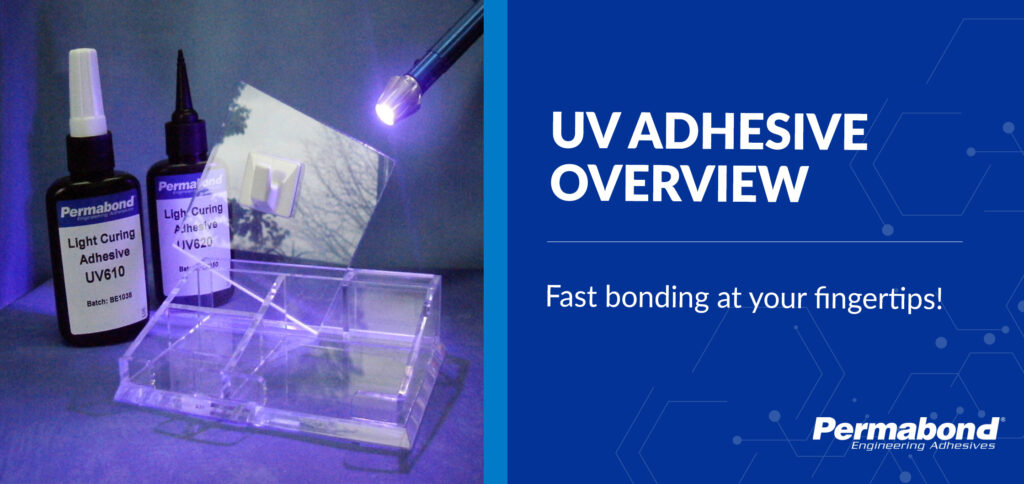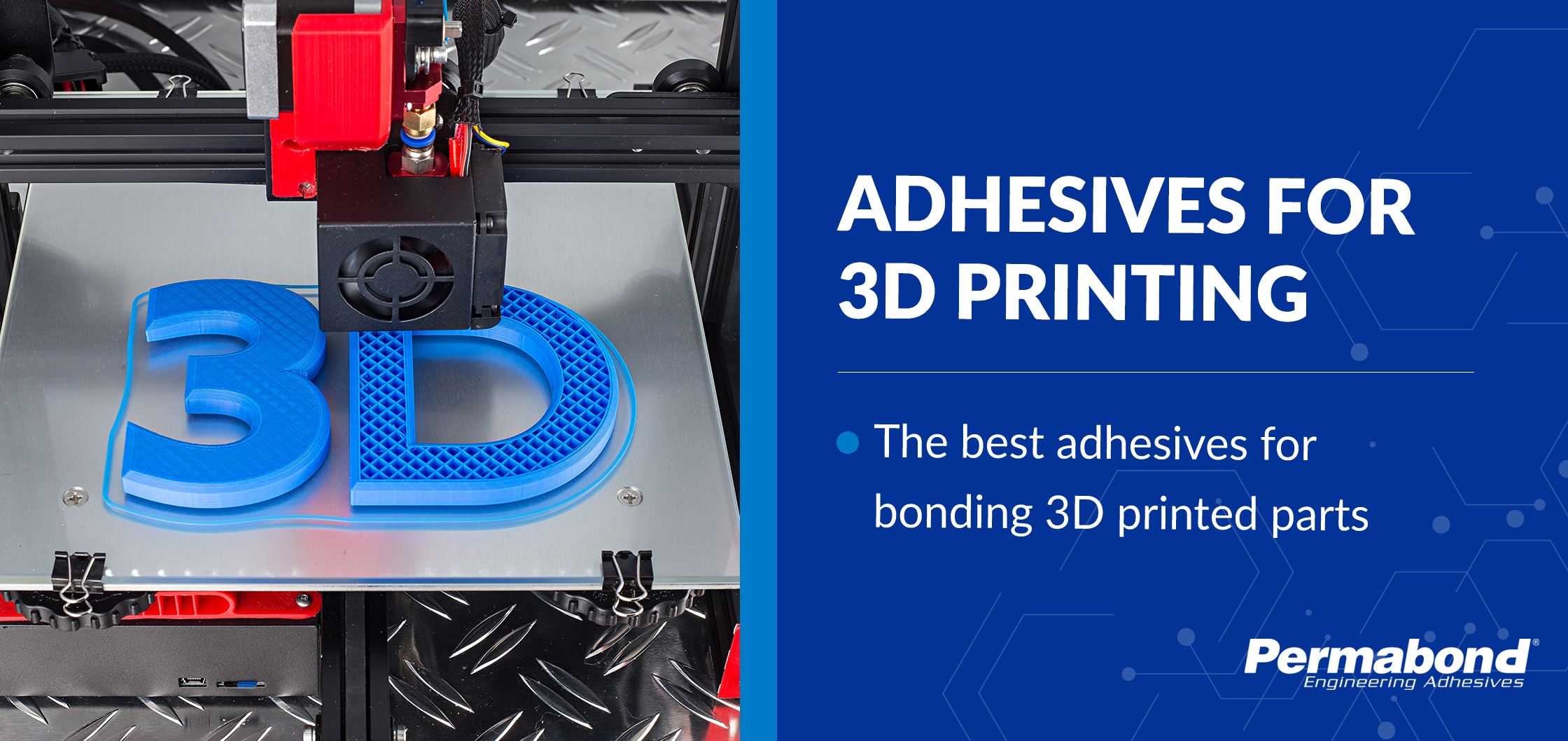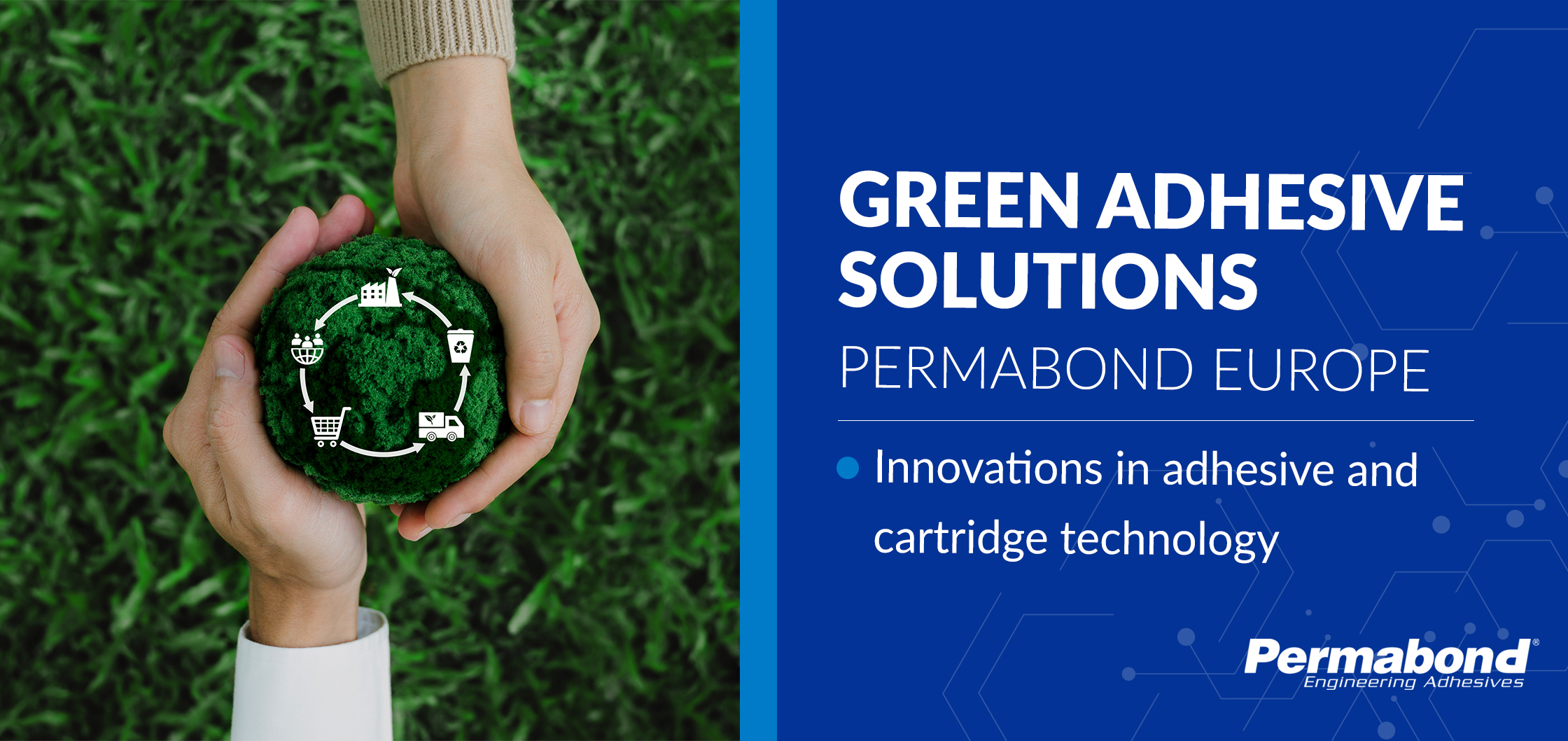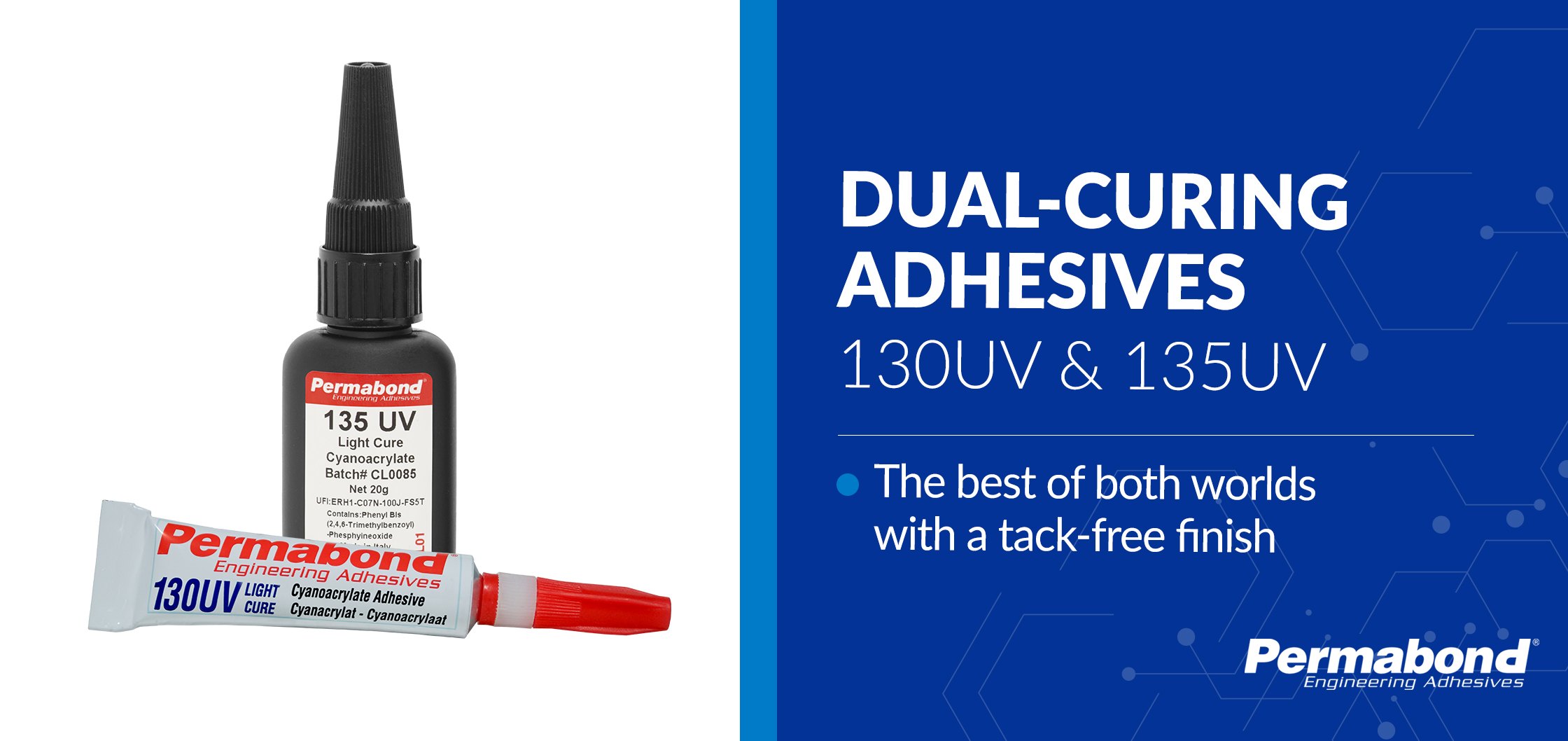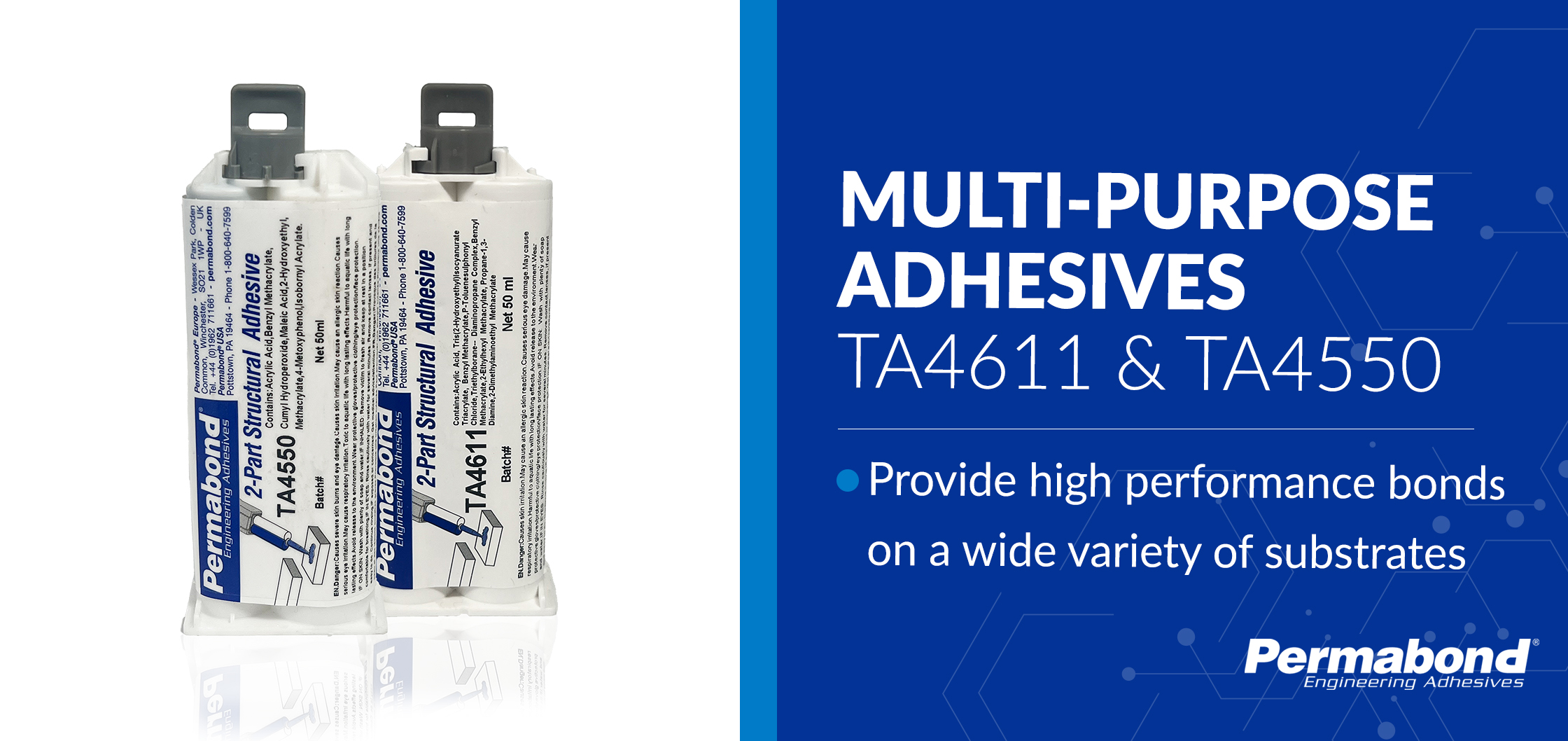There is no adhesive in the world that cures quite as fast as a UV light curable adhesive. Powered by ultraviolet (UV) light, these adhesives undergo a chemical reaction to go from a liquid to a solid, cured glue in a matter of a few seconds. This unique ability makes them very popular across a variety of industries.
The process whereby a UV adhesive goes from a liquid to a solid is known as ‘photopolymerization.’ UV adhesives contain small molecules called photoinitiators, which, upon exposure to UV light, cause the polymers present in the adhesive to begin linking together and solidifying. This process happens incredibly quickly, leading to the ultra-fast cure that you get with UV.
A key advantage of UV adhesives other than their rapid cure is that once dispensed, they remain in a liquid uncured state, so long as they aren’t exposed to UV light. Unlike some other adhesive types that start to cure quickly upon exposure to air or metals, this makes them great for precise alignment of parts before bonding. For products requiring a microscopic level of accuracy in alignment, for example in certain electronics and medical devices, a UV glue is by far the most preferred option for this reason. They also lend themselves well to high-speed production lines with automatic dispensing equipment, helping reduce processing time and improving both accuracy and consistency.
Another benefit of UV adhesives is that they contain no solvents. This ensures that their environmental impact is low, since they emit fewer volatile organic compounds (VOCs) than other adhesive types.
Where are UV glues used?
UV adhesives tend to bond very well to glass, plastics, metals and ceramics. They often display good moisture and chemical resistance, as well as withstanding fluctuations in temperature, which makes them well suited for a variety of applications. Industries in which UV glues are commonly used include:
- Electronics – bonding and coating components in circuit boards, sensors and displays
- Medical Devices – catheters, syringes, needle bonding
- Automotive – sealing headlights, bonding plastic trims
- Glass bonding – decorative glass, aquariums, glass furniture, artwork
- Optics – lenses, fibre optics, optical sensors, camera lenses
- Jewellery – bonding gems with metals
Latest developments in the field
A development in the UV adhesive market that Permabond has spearheaded is the formulation of dual-curing UV adhesives. These are adhesives that cure in the presence of UV light, and also via another curing mechanism, such as moisture. Indeed, in the case of Permabond 130UV, these are the two ways that this adhesive can cure.
You might be wondering why this is necessary – isn’t one curing mechanism enough? Well, in certain cases, no. Imagine you’re looking to conformally coat a PCB with adhesive on a fast production line. There may be certain areas on the PCB that a UV lamp doesn’t reach, or reach as well as other areas. These less-reached areas are known as ‘shadow areas’ and can remain uncured during production. Uncured adhesive means an unusable end product.
This is where Permabond 130UV shines. Its cyanoacrylate (moisture curing) mechanism, not needing UV light to cure, will make sure that any shadow areas cure just as fully as those reached by the UV light, ensuring an even cure throughout. Since moisture exists in the air and on practically every surface, it is an almost foolproof way of ensuring a complete cure.
There are many benefits to dual-curing adhesives other than their ability to bond shadow areas. We wrote an entire article dedicated to this topic last year if you’d like to find out more!
In addition to dual-curing products, Permabond is currently working on a UV light cure adhesive that can bond through dark materials – keep your eyes peeled for this!
If you’d like to find out more about Permabond’s selection of UV glues, please get in touch with us.
Kontaktieren Sie uns
Produkte
Technischer Beratungsdienst

Permabond hilft Ihnen, den richtigen Klebstoff für Ihre Anwendung auszuwählen.
Regionale Vertriebshändler

Produkte von Permabond sind über Vertriebshändler in allen Teilen der Welt zu beziehen. Hier können Sie unsere Vertriebshändler finden.

